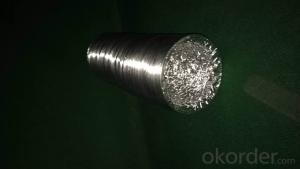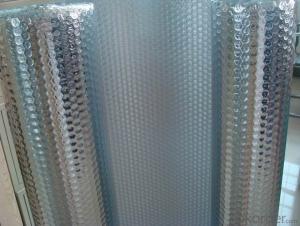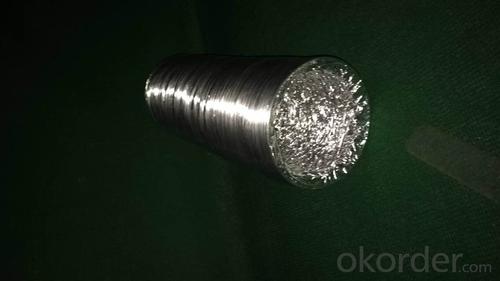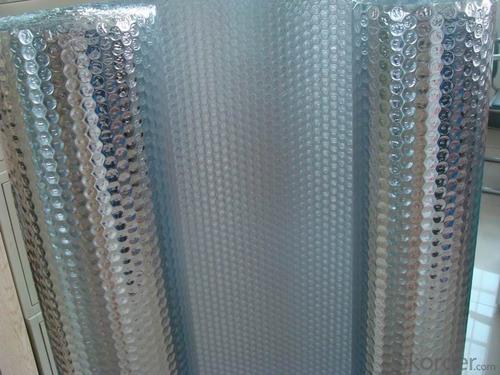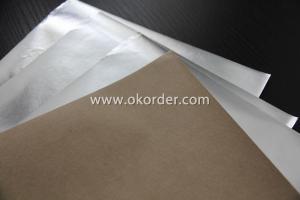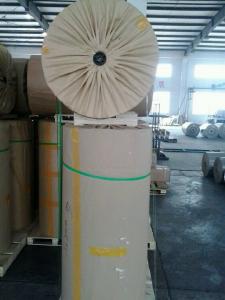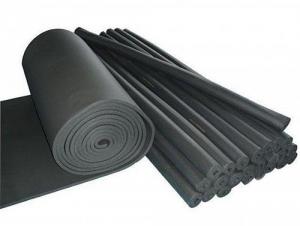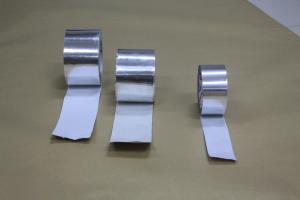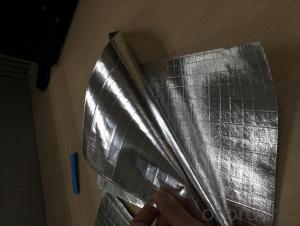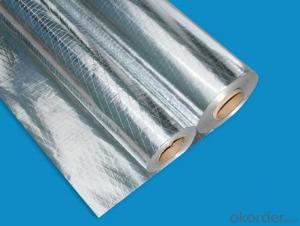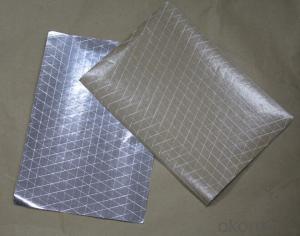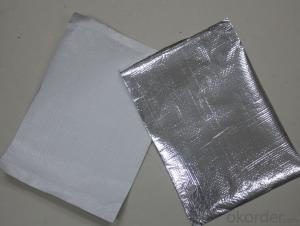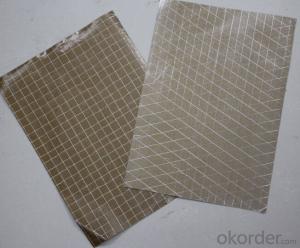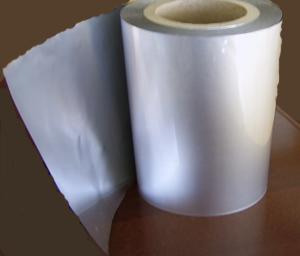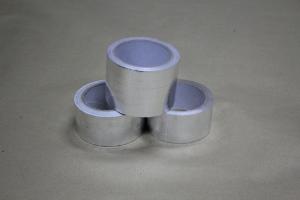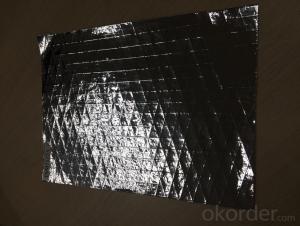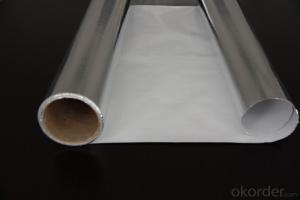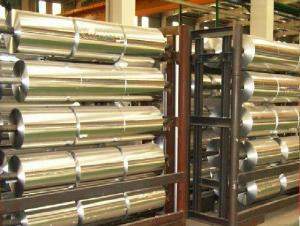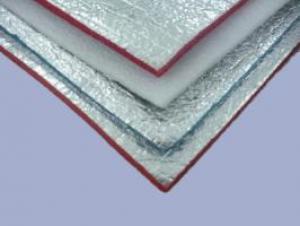Aluminum Foil Facing Flexible Ducts S/B Relax Insulation and Bubble Foil AL+PET
- Loading Port:
- Tianjin
- Payment Terms:
- TT OR LC
- Min Order Qty:
- 12 m²
- Supply Capability:
- 30000 m²/month
OKorder Service Pledge
OKorder Financial Service
You Might Also Like
Specifications
aluminum foil bubble insulation manufacture
thermal insulation
Construction:
Tri-directional scrim Heat Sealing Aluminum Foil : Corrosion resistance Coating/Foil: 7Microns/anti-heat adhesive/Kraft: 60 or 50gsm /Tri-way Scrim/Vinyl: 25Micons.
Application:
Heat Sealing Aluminum Foil is suitable for on-line lamination with thermal insulation such as glass wool blanket, rock wool or mineral wool by heating.
An thermal insulation facing to block radiant heat coming into house through the roof and walls during the summer and retain indoor heat generated during the winter. Heat Sealing Aluminum Foil facing also used as a water vapor barrier in air conditioning ductworks and cold rooms.
Benefit:
Heat FSK Facing is no need applying extra adhesive. Better corrosion resistance.
Does not contain hazardous chemicals or harmful materials that cause itching or respiratory problems.
A radiant barrier stops 97% of radiant heat transfer which improves the performance of the insulating material. Scrim reinforced for strength and durability.
Roll Width: 1.2M, 1.25M.etc
Roll Length: Up to 2500M.
- Q: What are some frequent errors individuals commit when employing aluminum foil in culinary practices?
- <p>Common mistakes when using aluminum foil in cooking include: 1) Using foil that's too thin, leading to tearing during cooking. 2) Not allowing for proper air circulation, which can result in uneven cooking or steaming instead of roasting. 3) Wrapping foods too tightly, which can prevent even cooking and may cause the foil to stick to the food. 4) Using foil with non-stick coatings on the inside, which can flake off and contaminate the food. 5) Overlapping the foil edges, which can cause food to leak out. 6) Not using enough foil, which can lead to spills and messes in the oven. 7) Not preheating the oven before placing foil-wrapped foods inside, which can lead to uneven cooking. 8) Not greasing the foil before placing food on it, which can cause sticking. Proper use of aluminum foil can enhance cooking and prevent these issues.</p>
- Q: What precautions should be taken when handling hot food using aluminum foil as a cooking tool?
- <p>When handling hot food using aluminum foil, first ensure the foil is thick enough to withstand high temperatures without puncturing. Always use heat-resistant gloves or a thick cloth to avoid burns. Do not wrap food directly in aluminum foil if it's very hot, as this can cause the foil to tear or the food to stick. Allow the food to cool slightly before wrapping. When removing the foil from the heat source, use tongs or a spatula to avoid direct contact with the hot foil. Be cautious of steam when opening the foil, as it can be very hot.</p>
- Q: Is it possible to recycle aluminum foil with a facing layer in my country?
- <p>Yes, aluminum foil with a facing layer can often be recycled, but the process may vary by country. In many countries, aluminum foil is recyclable, including the type with a plastic or paper facing. However, it's important to check with your local recycling program, as some facilities may not accept it due to the difficulty in separating the layers. If your local program doesn't accept it, you might need to find a specialized recycling center that can handle this type of material.</p>
- Q: Is it safe and practical to reuse plastic food wrap materials after cleaning them?
- <p>Reusing food wrap materials after washing them is generally not recommended. Plastic wraps can lose their effectiveness as barriers against bacteria and air after one use. Washing them can also introduce bacteria and may not fully remove any residual food particles. For food safety and hygiene, it's better to use new, clean wraps each time.</p>
- Q: Is it safe and practical to use recycled aluminum foil as a facing material in kitchen applications?
- <p>Yes, you can use recycled aluminum foil facing in your kitchen. Recycled aluminum is a sustainable and cost-effective material that retains the same properties as new aluminum. It is commonly used in kitchen applications such as backsplashes, countertops, and cabinetry due to its durability, low maintenance, and resistance to heat and moisture. However, ensure that the recycled aluminum foil facing is of high quality and meets safety standards to avoid any potential health or environmental concerns.</p>
- Q: Is it safe to use aluminum foil with a reflective side for storing food?
- <p>Yes, aluminum foil facing can be used for food storage. It is commonly used to wrap, cover, or store food in the refrigerator or freezer. The reflective side of aluminum foil is safe for food contact as it is made of a food-grade material. However, it's important to ensure the foil is clean and free from any damage or sharp edges that could puncture other food packaging. It's also advisable to avoid using it in direct contact with acidic or alkaline foods, as this can cause the foil to corrode and potentially release aluminum into the food.</p>
- Q: What are some methods to avoid aluminum foil sticking to food while cooking or baking?
- <p>Yes, there are several ways to prevent aluminum foil from sticking to food. You can lightly grease the foil with cooking spray or oil before placing the food on it. Alternatively, you can use parchment paper or a silicone baking mat between the food and the foil. Another method is to dampen the foil slightly with water, which can create a barrier. Using a non-stick aluminum foil designed for cooking can also be effective. Remember to handle the foil carefully to avoid tearing, especially when greasing or dampening it.</p>
- Q: Explain how to best utilize aluminum foil facing in the preparation of a sandwich.
- <p>The best ways to use aluminum foil facing in a sandwich include: 1) Wrapping the sandwich to keep it fresh and prevent it from drying out, especially when storing for later. 2) Using it as a makeshift 'grill' by placing the sandwich between two sheets of foil and toasting it in a panini press or on a stovetop for a crispy exterior. 3) Creating a foil pouch by sealing the sandwich in foil, which can be used for cooking sandwiches in an oven or on a campfire, keeping the ingredients moist and tender. 4) Using foil to press down on the sandwich while grilling or toasting, ensuring even heat distribution and a uniform texture. Always ensure the foil is food-safe and does not come into direct contact with the sandwich's fillings to avoid any potential contamination.</p>
- Q: Is it safe to use aluminum foil with a facing layer for storing salad dressings or oils?
- <p>Yes, it is generally safe to use aluminum foil facing for storing salad dressing or oil. Aluminum foil facing is designed to provide a barrier against air and moisture, which helps to keep the contents fresh. However, it's important to ensure that the foil is food-grade and that it does not have any sharp edges that could puncture the container. Additionally, it's best to store these items in a cool, dry place away from direct sunlight to maintain their quality and prevent spoilage.</p>
- Q: Is it possible to use aluminum foil as a baking surface? If yes, what kinds of foods are suitable for baking with aluminum foil?
- <p>Yes, aluminum foil can be used for baking. It's particularly useful for foods that require even heat distribution or need to be shielded from direct heat, such as delicate pastries, fish, or vegetables. It can also be used to prevent food from sticking to the baking sheet or to catch any drips, making cleanup easier. However, it's important to note that some foods, especially those with a high sugar content, can burn if they come into direct contact with the foil, so it's best to use it with a light layer of oil or parchment paper underneath.</p>
Send your message to us
Aluminum Foil Facing Flexible Ducts S/B Relax Insulation and Bubble Foil AL+PET
- Loading Port:
- Tianjin
- Payment Terms:
- TT OR LC
- Min Order Qty:
- 12 m²
- Supply Capability:
- 30000 m²/month
OKorder Service Pledge
OKorder Financial Service
Similar products
Hot products
Hot Searches
Related keywords
